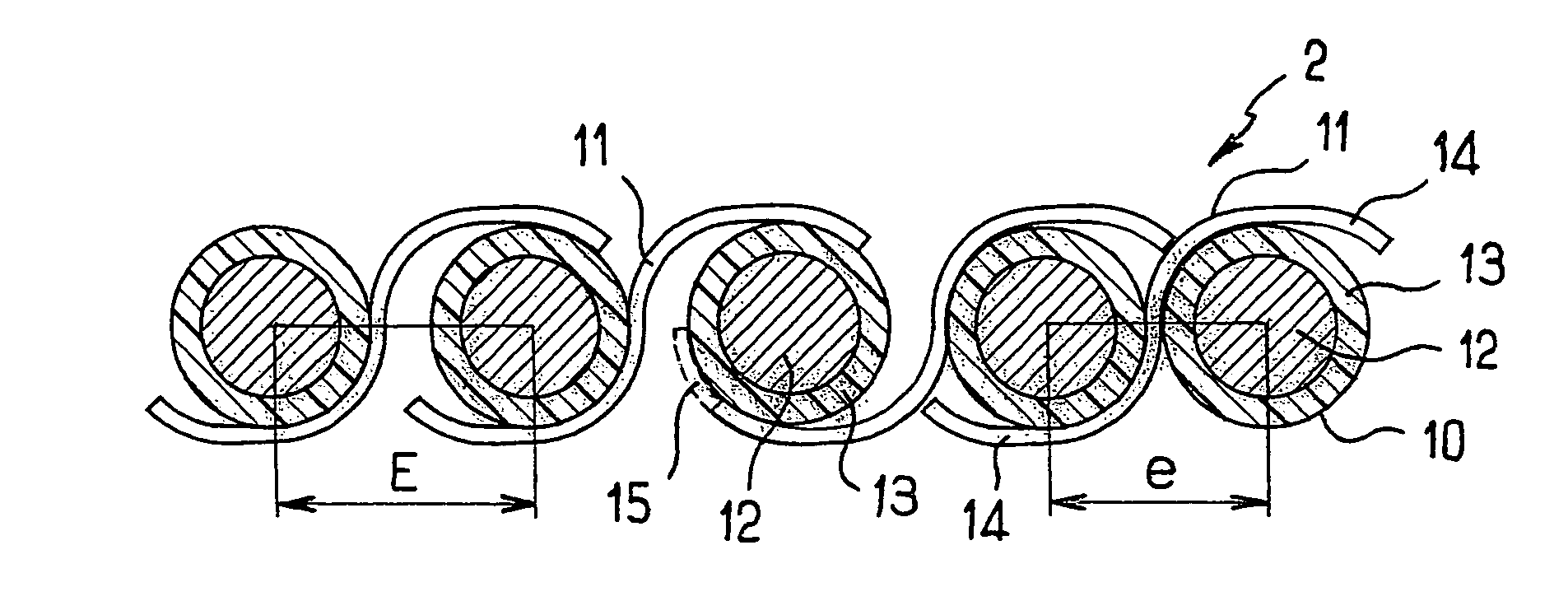Flexible tubular pipe for hydrocarbon transport with carcass consisting of an elongated element stapled with a band iron
a tubular pipe and hydrocarbon technology, applied in the direction of flexible pipes, pipes, mechanical equipment, etc., can solve the problems of limited thickness, affecting the ability of pipes to be used, and each pipe diameter poses a limitation on the possible depth at which pipes can be used, so as to increase the inertia of the carcass, reduce the cost of the carcass, and increase the capacity of withstanding great depths
- Summary
- Abstract
- Description
- Claims
- Application Information
AI Technical Summary
Benefits of technology
Problems solved by technology
Method used
Image
Examples
Embodiment Construction
[0035]The flexible pipe 1 shown in FIG. 1 comprises, from the inside outward:[0036]a carcass 2 consisting of an interlocked metal winding so as to prevent the pipe from collapsing under the external pressure;[0037]an inner sealing sheath 3, made of a plastic, generally a polymer, resistant to the chemical action of the fluid to be transported;[0038]a pressure vault 4 mainly resistant to the pressure developed by the fluid in the sealing sheath and consisting of a short-pitch helical winding (that is to say one with a winding angle close to 90°) around the inner sheath of one or more interlocked (self-interlockable or otherwise) profiled metal wires. The profiled wires have a cross section in the form of a Z or T, or derivatives (teta or zeta) thereof, or in the form of a U or in the form of a I;[0039]at least one tensile armour ply 5 (and generally at least two crossed plies) wound with a long pitch; the lay angle measured along the longitudinal axis of the pipe is, for example, app...
PUM
 Login to View More
Login to View More Abstract
Description
Claims
Application Information
 Login to View More
Login to View More - R&D
- Intellectual Property
- Life Sciences
- Materials
- Tech Scout
- Unparalleled Data Quality
- Higher Quality Content
- 60% Fewer Hallucinations
Browse by: Latest US Patents, China's latest patents, Technical Efficacy Thesaurus, Application Domain, Technology Topic, Popular Technical Reports.
© 2025 PatSnap. All rights reserved.Legal|Privacy policy|Modern Slavery Act Transparency Statement|Sitemap|About US| Contact US: help@patsnap.com



